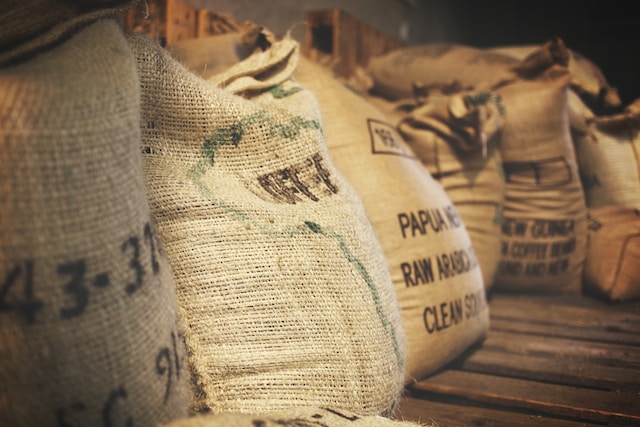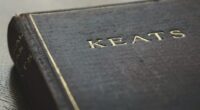The differences between sisal and jute are numerous, from their appearance to the way they are produced and used. Both materials are strong and durable, but sisal is more resilient than jute due to its high tensile strength. Jute, on the other hand, is softer with a natural glossy sheen that makes it popular for making accessories like bags and rugs.
Sisal
(Photo by Karolina Grabowska)

Sisal is a natural fiber that is derived from the leaves of the agave plant, specifically the species Agave sisalana. Sisal fibers are long, durable, and have a coarse texture. The fibers are typically harvested by hand and processed to remove the fleshy part of the leaf, leaving behind the long fibers.
Sisal has a wide range of uses due to its strength and durability. It is commonly used in the manufacturing of various products, including ropes, twine, carpets, rugs, mats, and paper products. Sisal is also used in the production of dartboards and the core of certain types of hats.
Sisal is a sustainable and eco-friendly material as it is biodegradable and renewable. It is also known for its resistance to deterioration from saltwater and exposure to the sun, making it a popular choice for maritime and outdoor applications.
Sisal is a versatile and durable material that has a wide range of uses. Its sustainability and resistance to environmental factors make it a popular choice in various industries.
Jute
(Photo by Diego Catto on Unsplash )

Jute is a natural fiber that is derived from the stem of the jute plant, which is mainly grown in the Indian subcontinent and Bangladesh. The fibers are extracted by retting, a process of soaking the stems in water to separate the fibers from the stem.
Jute fibers are long, soft, and shiny, with a golden brown color. They are used to make a wide variety of products, including bags, rugs, mats, ropes, twines, and textiles. Jute is also used in the manufacturing of paper products and in the construction industry as a natural reinforcement material.
Jute is known for its sustainability and eco-friendliness, as it is a renewable resource that requires little fertilizer or pesticides to grow. It is also biodegradable and compostable, making it an environmentally friendly alternative to synthetic fibers.
However, jute is not as strong or durable as some other natural fibers, such as sisal or hemp. It is also susceptible to rotting and mildew, especially when exposed to moisture. To overcome this, jute products are often treated with chemicals to improve their durability and resistance to environmental factors.
Jute is a versatile and eco-friendly fiber that has a wide range of uses. Its sustainability and biodegradability make it a popular choice in various industries, although its durability may be limited in certain applications.
Sisal Vs. Jute – Key differences
Sisal and jute are two natural fibers that are widely used in the manufacturing of various products. Although they share some similarities, there are several key differences between sisal and jute:
Source: Sisal is derived from the leaves of the agave plant, while jute is derived from the stem of the jute plant.
Strength: Sisal is stronger and more durable than jute. Sisal fibers are longer and have a coarser texture, which makes them more suitable for products that require strength and durability, such as ropes and twines.
Texture: Jute is softer and more flexible than sisal. Jute fibers have a silky texture that makes them ideal for products that require a soft feel, such as carpets and rugs.
Color: Sisal is typically a creamy white or pale yellow color, while jute has a golden brown color.
Sustainability: Both sisal and jute are sustainable and eco-friendly fibers. However, jute is considered more environmentally friendly than sisal because it requires less water and fewer pesticides to grow.
Moisture resistance: Sisal is more resistant to moisture than jute, which makes it a better choice for products that will be used in humid or wet environments.
Sisal and jute are both versatile fibers that have a wide range of uses. The choice between the two will depend on the specific needs of the product, such as strength, texture, and moisture resistance.
Which is better jute or sisal?
The choice between jute and sisal depends on the specific needs of the product or application. Both fibers have their own unique characteristics and advantages.
If the product requires strength and durability, sisal is the better choice as it is stronger and more durable than jute. Sisal fibers have a coarser texture and are longer, making them ideal for products that require toughness and resilience, such as ropes and twines.
On the other hand, if the product requires a softer texture, such as carpets or rugs, jute is the better choice. Jute fibers have a silky texture that makes them ideal for products that require a soft feel.
Sustainability is also a consideration. Both fibers are eco-friendly, renewable, and biodegradable, but jute is considered more environmentally friendly than sisal because it requires less water and fewer pesticides to grow.
In summary, the choice between jute and sisal depends on the specific needs of the product, such as strength, texture, and sustainability. Both fibers have their own unique characteristics and advantages, and the best choice will depend on the specific requirements of the application.
What is seagrass?
Seagrass is a flowering plant that grows in shallow marine environments, such as estuaries, bays, and lagoons. It is often found growing in large meadows or beds, forming an important part of the marine ecosystem.
Seagrass is a complex plant that consists of long, narrow leaves that grow from a central stem. The leaves are typically green or brown and can grow up to three meters in length, depending on the species. Seagrass produces flowers and seeds, which are essential for its reproduction.
Seagrass meadows are an important habitat for a wide range of marine species, including fish, crustaceans, and marine mammals. They also play a critical role in maintaining water quality by absorbing and storing nutrients and pollutants, and they help to stabilize sediment and prevent erosion.
Seagrass is also used by humans in a variety of ways. The leaves and stems are used to make furniture, baskets, and other household items, while the roots are used in traditional medicine to treat a range of ailments.
Unfortunately, seagrass meadows are under threat from a range of factors, including coastal development, pollution, and climate change. The loss of seagrass meadows can have significant impacts on the health of the marine ecosystem and the livelihoods of coastal communities.
What are the advantages and disadvantages of jute and sisal?
Jute and sisal are both natural fibers that have their own unique advantages and disadvantages. Here are some of the key advantages and disadvantages of each:
Advantages of jute:
- Eco-friendly: Jute is a renewable and biodegradable fiber that is environmentally friendly.
- Soft texture: Jute fibers have a silky texture that makes them ideal for products that require a soft feel, such as carpets and rugs.
- Affordable: Jute is an affordable fiber, making it a cost-effective choice for a wide range of products.
Disadvantages of jute:
- Moisture sensitivity: Jute is sensitive to moisture, and it can easily be damaged by water.
- Weakness: Jute is not as strong as other natural fibers, such as sisal, which limits its use in applications that require strength and durability.
Advantages of sisal:
- Strength and durability: Sisal is a strong and durable fiber that is ideal for products that require toughness and resilience, such as ropes and twines.
- Moisture resistance: Sisal is more resistant to moisture than jute, which makes it a better choice for products that will be used in humid or wet environments.
- Versatility: Sisal can be used for a wide range of products, including carpets, rugs, and furniture.
Disadvantages of sisal:
- Coarse texture: Sisal fibers have a coarse texture that may not be suitable for products that require a soft feel.
- More expensive: Sisal is generally more expensive than jute, making it less cost-effective for some applications.
The choice between jute and sisal will depend on the specific needs of the product or application. Jute is ideal for products that require a soft texture and affordability, while sisal is better suited for products that require strength, durability, and moisture resistance.
What are the types of jute?
There are different types of jute based on their characteristics, quality, and application. Some of the commonly recognized types of jute are:
- White jute: This is the most common type of jute, also known as Corchorus capsularis, and is native to Bangladesh and India. It has a fine, silky texture and is used for making high-quality fabrics, clothing, and household items.
- Tossa jute: This is a higher quality jute than white jute, also known as Corchorus olitorius, and is native to India and Bangladesh. It has a coarser texture and is used for making burlap bags, twine, and carpets.
- Mesta jute: This type of jute is also known as Hibiscus cannabinus and is native to Asia and Africa. It is similar to white jute in texture and is used for making fabrics, ropes, and paper.
- Kenaf: This is a related plant species to jute, and it is also used for producing fibers. It has a similar texture to jute and is often used as a substitute.
- Roselle: Also known as Hibiscus sabdariffa, this is a plant species similar to mesta jute and is used for making fibers and fabrics.
Each type of jute has its unique properties and is used for different applications. The quality of jute varies depending on the growing conditions, harvest time, and processing method. Therefore, it is important to choose the right type of jute for the specific product or application.








